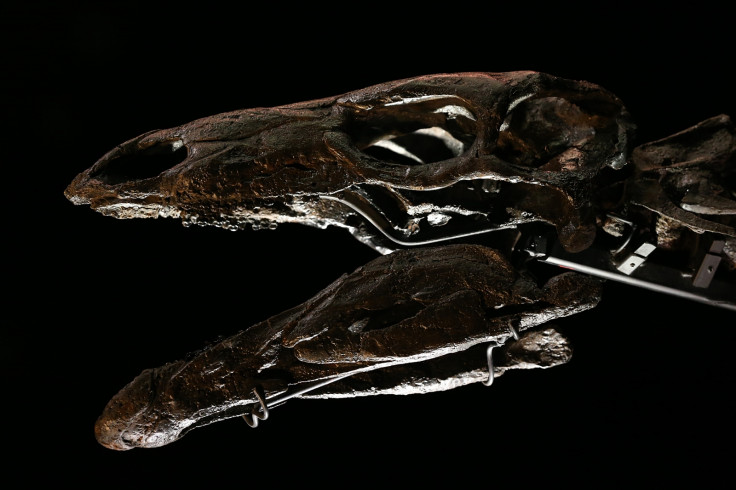Sophie the stegosaurus: 150-million-year-old complete dinosaur skeleton unveiled at Natural History Museum
Sophie the stegosaurus, the world's most complete skeleton of the 150-million-year-old dinosaur, has found a new home at the Natural History Museum in London.
Scientists have begun a detailed analysis of the dinosaur, which will be unveiled to the public today, to find out as much as possible about the iconic creature.
The skeleton is made up of 360 bones, which were individual digitally scanned by a UK team to reconstruct the animal. Sophie will go on display at the Earth Hall, as the first near-complete skeleton to go on display at the museum for nearly 100 years.
Where was the skeleton discovered?
Sophie was discovered in 2003 at the Red Canyon Ranch in Wyoming, United States, which would have been a subtropical forest around 150 million years ago.
The fossilised bones were discovered by palaeontologist Bob Simon, who stumbled upon the find while expanding the dinosaur quarry. The nearly fully connected stegosaur skeleton was buried at the top of a hill. It took three weeks of excavation to remove the skeleton from the ground.
There are a total of 19 plates on the back and four spikes on the tail. All of the individual skull bones are three-dimensional and detached from each other – which makes Sophie one of the most valuable dinosaurs ever found. Researchers are able to study the skull closely, to examine the dinosaur's eating habits and bite strength.
Although stegosauruses are a well-known dinosaur, there are only six partial skeletons of the animal.

Is Sophie actually a "she"?
The sex of the dinosaur is actually unknown, but the skeleton was named after the daughter of the hedge fund manager whose donation made the museum's acquisition possible.
It is known that Sophie died when she was a young adult and her skeleton is around 80% complete.
Sophie is 9.5 ft tall (2.9 metres) and 18ft long (5.6 metres), she is small in comparison with the largest of her species – which could grow to an impressive 29 ft (nine metres) tall.
What research is being carried out?
The dinosaur arrived at the museum in December 2013. Since then, scientists worldwide have been taking photographs and measurements, CT scans and laser surface scans to uncover the stegosaur's secrets.
Using 3D modelling and medical imaging techniques, the museum's researchers hope to learn more about the purpose of the dinosaur's back plates, its gait and its food intake.
Professor Paul Barrett, lead dinosaur researcher at the museum, said: "It's an honour to have this extraordinary specimen permanently on display to inspire Natural History Museum visitors. Stegosaurus fossil finds are rare.
"Having the world's most complete example here for research means we can begin to uncover the secrets behind the evolution and behaviour of this intriguing dinosaur species," he added.
Scientists hope to resolve several pending questions. One is how the dinosaur managed to walk, with such small front legs and large back legs, another is how the creature managed to chew enough food with such a small skull, to sustain a large body.
Researchers also want to find out what the stegosaur's back plates were for. So far scientists have proffers various reasons, including temperature regulation, sexual attraction between mates and for defence.
That plates were covered in a thin membrane of skin, which was capable of "blushing" red. This may have served the purpose of indicating sexual function or to signpost food sources to stegosauruses in the herd.
Using Sophie, scientists also hope to find out more about the dinosaur's muscles.
Dr Charlotte Brassey, one of the researchers, told BBC News: "I reconstructed the skeleton to see what it might have looked like and then began to reconstruct the muscles and how they connected with the skeleton.
"From that we can begin to say how effective its muscles were and eventually in the future we would like to reconstruct how it moved," she added.
© Copyright IBTimes 2025. All rights reserved.






















